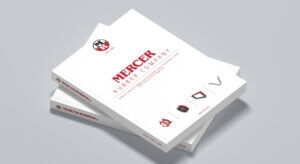The Rise of Design Thinking as a Problem-Solving Strategy
In a world where innovation drives progress at an unprecedented pace, traditional problem-solving methods often fall short in addressing complex, ambiguous challenges. This is where design thinking emerges as a powerful approach, offering a structured yet creative way to tackle problems across various industries and disciplines.
What is Design Thinking?
At its core, design thinking is a human-centered approach to innovation that draws upon the designer’s toolkit to integrate the needs of people, the possibilities of technology, and the requirements for business success. Unlike conventional problem-solving methods that rely on linear, step-by-step approaches, design thinking embraces ambiguity and encourages iteration and experimentation.
Key Principles of Design Thinking
1. Empathy: Understanding the needs and perspectives of the end-users is fundamental. Design thinkers immerse themselves in the users’ experiences to gain insights that inform the design process.
2. Define: Clearly defining the problem is crucial. This involves synthesizing the insights gained through empathetic research into a concise problem statement that focuses the team’s efforts.
3. Ideate: Generating a wide range of ideas without judgment is a cornerstone of design thinking. Brainstorming sessions encourage creativity and exploration of potential solutions.
4. Prototype: Developing prototypes allows design thinkers to visualize and test ideas quickly. This iterative process helps refine concepts based on user feedback and feasibility.
5. Test: Testing prototypes with real users provides valuable feedback that informs further iterations. This step ensures that the final solution addresses the identified problem effectively.
Applications Across Industries
Design thinking has transcended its origins in product design to become a versatile problem-solving strategy applicable to diverse fields:
– Technology: Companies like Apple and Google leverage design thinking to create user-friendly products and interfaces.
– Healthcare: Hospitals and healthcare providers apply design thinking to improve patient experiences and streamline processes.
– Education: Schools and universities use design thinking to develop innovative teaching methods and improve learning outcomes.
– Business: Corporations adopt design thinking to foster innovation in product development, marketing strategies, and customer experience.
Benefits of Design Thinking
The rise of design thinking can be attributed to several key advantages it offers:
– Creativity: Encourages innovative solutions by challenging conventional thinking.
– Collaboration: Cross-functional teams work together to solve complex problems, fostering a culture of collaboration.
– User-Centric: Solutions are rooted in deep understanding of user needs, resulting in products and services that resonate with customers.
– Iterative Improvement: Embraces failure as part of the learning process, allowing for continuous improvement and refinement.
Challenges and Criticisms
Despite its benefits, design thinking is not without challenges. Critics argue that it can be time-consuming, may lack rigor in certain contexts, and might not always integrate well with existing organizational structures. Moreover, the emphasis on empathy and user-centeredness can sometimes neglect broader societal impacts.
Conclusion
As organizations navigate an increasingly complex and interconnected world, design thinking provides a structured yet flexible approach to problem-solving. By placing human needs at the center of innovation, design thinking empowers teams to create solutions that are not only functional but also meaningful and transformative. Its evolution from a niche design methodology to a mainstream problem-solving strategy underscores its relevance in shaping the future of business, technology, and society as a whole.
In essence, the rise of design thinking reflects a shift towards more holistic, user-centered approaches to innovation—a trend that is likely to continue shaping our world in profound ways.
Let’s Build Something Great… Together.
At Thinkhouse, we’ve spent over 18 years helping clients elevate their brands through smart strategy, standout design, clever SEO and results-driven digital advertising and marketing. For us it’s all about the relationship, trust and ROI.
Let’s connect and see how we can help your business grow and become our next happy client (and maybe become besties in the process).
Have a project in mind? Call (917) 805-0480 or contact us here.
Please see our impressive reviews from some of our happy clients.
Questions?
Have a digital marketing question? Looking for some guidance? Send us a message and we'd be more than happy to help.
Sign up!
Join our mailing list for helpful insights.




